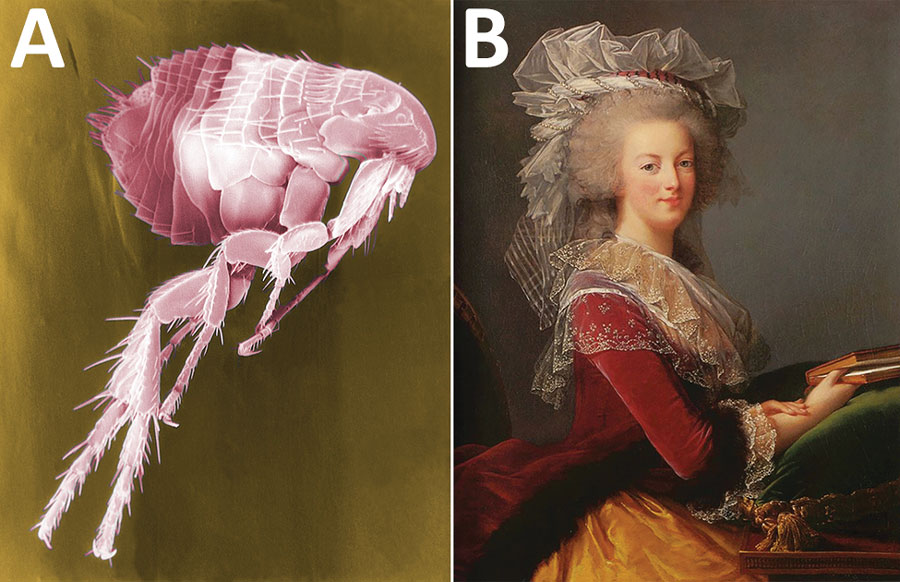Volume 28, Number 2—February 2022
Etymologia
The Color Puce (Pyüs)
Figure

Figure. A) Digitally colored scanning electron microscopic image of a flea. Puce is a particularly difficult color to describe. Numerous shades of puce exist, some of which are associated with different anatomic areas of the flea. Image no. 11436: Janice Haney Carr/CDC. B) Portrait of Marie Antoinette painted in 1785 for the Ministry of Foreign Affairs, by Louise Élisabeth Vigée Le Brun. Private collection, Public domain. She seemed to have “preferred a shade leaning more toward ash-gray,” but is seen here modeling a more standard hue of puce.
Page created: January 04, 2022
Page updated: January 23, 2022
Page reviewed: January 23, 2022
The conclusions, findings, and opinions expressed by authors contributing to this journal do not necessarily reflect the official position of the U.S. Department of Health and Human Services, the Public Health Service, the Centers for Disease Control and Prevention, or the authors' affiliated institutions. Use of trade names is for identification only and does not imply endorsement by any of the groups named above.